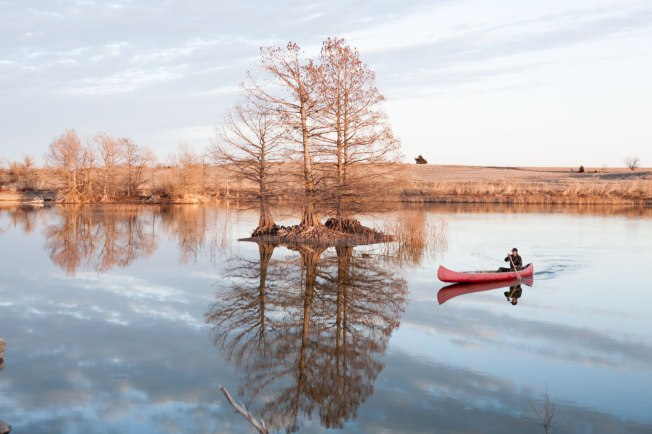 The Ponca community is also sitting on top of "a spider web" of ConocoPhillips pipelines, some of which transport Canadian tar sands bitumen - like the Enbridge Pegagus line that recently busted in Mayflower, Arkansas - and what would also come through TransCanada's Keystone XL if the project is completed. Describing the whole situation as a form of environmental genocide, Casey Camp-Horinek also shared, “It will not only come through the original territory of the Ponca
people [but] it will follow the Trail of Tears of the Ponca people from
the 1800s. As a Ponca woman these things are not
far removed from us. My own grandfather, my mother’s father, was on this
Trail of Tears of the Ponca.”
The Ponca community is also sitting on top of "a spider web" of ConocoPhillips pipelines, some of which transport Canadian tar sands bitumen - like the Enbridge Pegagus line that recently busted in Mayflower, Arkansas - and what would also come through TransCanada's Keystone XL if the project is completed. Describing the whole situation as a form of environmental genocide, Casey Camp-Horinek also shared, “It will not only come through the original territory of the Ponca
people [but] it will follow the Trail of Tears of the Ponca people from
the 1800s. As a Ponca woman these things are not
far removed from us. My own grandfather, my mother’s father, was on this
Trail of Tears of the Ponca.”In the video below, both Casey Camp-Horinek and her brother, A.I.M. activist Carter Camp, who was at the 1973 Wounded Knee standoff, speak at the Great Plains Tar Sands Resistance Camp on March 18, 2013 near Ponca City.
Casey Camp-Horinek was also at the international treaty gathering, Protect the Sacred, traveling the route of the pipeline along with the Ponca Nation's Trail of Tears to Pickstown, South Dakota, where indigenous leaders from many nations rejected the Keystone XL pipeline. Truthout reports that
the proposed route of the Keystone XL will cross hundreds of indigenous sacred spiritual sites and burial grounds, as well as two major sources of drinking water, the Ogallala aquifer and the Mni Wiconi water line for the Pine Ridge and Rosebud reservations.
*Photo credit/Travelok/ A statue of Ponca Chief Standing Bear in Standing Bear Park, Ponca City, Oklahoma, about 1,000 yards in front of the Conoco refinery. Wikipedia reports that Chief Standing Bear successfully argued in U.S. District Court in an 1879 landmark civil rights case that Native Americans are "persons within the meaning of the law" and have the rights of citizenship. In the same city sits a statue of oilman E.W. Marland, founder of Marland Oil - later Conoco - and who was elected to the House of Representatives, and also as an Oklahoma governor. Steven Mufson with the Washington Post wrote in July 2012, after a visit to the area and meeting with historical author Joe Starita (I Am A Man - Chief Standing Bear's Journey For Justice),
The forced marches of Poncas and other Native American tribes are known as the “trails of tears” and I was struck by two maps in Joe’s book. One shows the Ponca lands in northern Nebraska; those lands sat alongside the Niobrara River, one of the key crossings for the Keystone XL pipeline. We drove over that river and photographed a family swimming and strolling on sand bars in the river. The second shows the Ponca Trail of Tears from May 16 to July 9, 1877. The trail – from the Niobrara over the Platte River through the town of Seward and crossing the Nebraska border near what today is Steele City — is almost identical to the proposed path of the Keystone XL pipeline through Nebraska and northern Kansas.

No comments:
Post a Comment